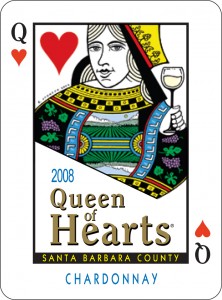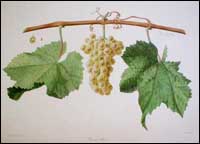by Lorri | Apr 25, 2012 | UnCorked
 A recent Uncorked column on chardonnay had many readers sending feedback on the continued love of this grape (making me realize I may not be writing about this superstar enough). Along with various emails praising a column devoted solely to chardonnay came a flurry of requests for more values and fewer splurges. Many readers also wanted more 1.5-liter and box options for large parties and cost savings.
A recent Uncorked column on chardonnay had many readers sending feedback on the continued love of this grape (making me realize I may not be writing about this superstar enough). Along with various emails praising a column devoted solely to chardonnay came a flurry of requests for more values and fewer splurges. Many readers also wanted more 1.5-liter and box options for large parties and cost savings.
I put my palate to the test and searched our market for the best chardonnays that fit into a price range under $15 for standard bottles, boxed for $25 or less and 1.5-liters for less than $20.
VALUES UNDER $15
- 2011 Hess Collection Chardonnay, California (about $13 retail)
- 2011 Santa Rita 120 Chardonnay, Chile (about $10 retail)
- 2011 Gnarly Head Chardonnay, California (about $11 retail)
- 2011 Toad Hollow Chardonnay, California (about $15 retail)
- 2011 Root 1 Chardonnay, Chile (about $12 retail)
- 2011 Little Penguin Chardonnay, Australia (about $8 retail)
- 2011 Concannon Chardonnay, California (about $10 retail)
BOXED OPTIONS
- 2011 Pepperwood Grove, California (about $20 retail)
- 2011 Bota Box Chardonnay, California (about $19 retail)
- 2011 Black Box Chardonnay, California (about $25 retail)
- 2011 FishEye Chardonnay, California (about $16 retail)
1.5-LITER BOTTLE
- 2011 Lorval Chardonnay, France (about $12 retail)
- 2011 Lindeman’s Bin 65 Chardonnay, Australia (about $14 retail)
- 2011 Beringer Vineyards Chardonnay, California (about $18 retail)
- 2011 Columbia Crest Two Vines Chardonnay, California (about $18 retail)
by Lorri | Apr 11, 2012 | UnCorked
 If cabernet sauvignon were known as “king” of the wine world, then chardonnay would be “queen.”
If cabernet sauvignon were known as “king” of the wine world, then chardonnay would be “queen.”
Like a chameleon tweaking its pigmentation to blend into its environment, chardonnay’s versatility knows few bounds. It can be left “naked” or treated with oak, undergo malo-lactation, be aged sur lie (French for on the lees, the sediment of grape particles and dead yeast cells that accumulates during fermentation) or even blended with other grapes, with each bottle revealing a diverse profile.
It’s a happy-go-lucky grape known by many as the “vineyard growers dream” — easy to please, no hassle, grows in diverse climates, diverse soils and, to the growers’ pleasure, produces incredibly high yields.
It is no wonder chardonnay lines the retail store shelves in so many styles and price ranges.
Even with its range and versatility, not all chardonnay is created equal, with some regions producing distinctive styles.
PLAYING IT COOL
Chablis is the coolest part of Burgundy and is noted for its unique Kimmeridgian soils (soil with fossilized shells). This combination of climate and soil means the chardonnay grape must struggle to ripen, resulting in a more steely, crisp style, quite unlike the full-bodied flavors from warmer climates.
THE VALUE
- 2010 Joseph Drouhin Chablis, France (about $26 retail)
THE SPLURGE
- 2010 Jean-Marc Brocard Monte de Tonnerre Chablis, France (about $47 retail)
HOME IS WHERE THE HEART IS
Comprising the southern half of Burgundy’s famed Cote d’Or (slope of gold) is the Cote de Beaune, Chardonnays’ sacred ground. Chardonnay from this region is considered to be the best of the world.
To really get to know the homeland in which chardonnay is worshiped you will need to get to know the various regions because the styles can range from buttery, creamy, nutty and even light-bodied depending on the producer and vineyard.
The producers tend to use a mixture of used and new oak for their best chardonnays.
THE VALUE
- 2009 Olivier Leflaive Puligny Montrachet, France (about $64 retail)
THE SPLURGE
- 2009 Girardin Les Combettes Puligny Montrachet, France (about $90 retail)
CALIFORNIA DREAMING
California chardonnay is extremely varied, from rich complex styles to the heavy, high alcohol sweet styles. And with the varying styles come a range in prices. You’ll find some of the most exceptional examples of this grape’s complexity in the cooler regions of Sonoma, Napa and Carneros.
THE VALUE
- 2010 Robert Mondavi Napa Valley Chardonnay, California (about $22 retail)
THE SPLURGE
- 2009 Kistler Les Noisetiers Sonoma Chardonnay, California (about $70 retail)
DOWN UNDER
Australian chardonnay has a distinctive citrus, lime flavor when grown in ideal conditions and with a reliable producer. (The best are Adelaide Hills or Margaret River.) If the wine label simply states “Southeastern Australia” or “Australia” without listing a specific region it is most likely made with blended fruit from numerous regions.
These blends may make great bargains, but they are not for aging.
THE VALUE
- 2010 Grant Burge Chardonnay, Australia (about $26 retail)
THE SPLURGE
- 2010 d’Arenberg Lucky Lizard Chardonnay, Australia (about $49 retail)
by Lorri | Aug 17, 2011 | UnCorked
 I am first to admit I was one of the many who turned my back on chardonnay in the last several years. It was never my intention but I was trapped in the monotony of predictable styles and flavor. However, a few weeks ago my palate was offered a revival of sorts, with a spectacular French Burgundy. I took to exploring this chameleon of a grape hoping to renew my expectations and once again became a fan of chardonnay.
I am first to admit I was one of the many who turned my back on chardonnay in the last several years. It was never my intention but I was trapped in the monotony of predictable styles and flavor. However, a few weeks ago my palate was offered a revival of sorts, with a spectacular French Burgundy. I took to exploring this chameleon of a grape hoping to renew my expectations and once again became a fan of chardonnay.
FRANCE
Chardonnay’s character is often obscured by the use of oak but France’s Cote d’Or seems to have perfected the balancing act. If you enjoy the rich, soft, creamy side of this grape look to wines from this region. But if you enjoy chardonnay without the oak consider French Chablis, a classic dry white wine of north Burgundy. French Chablis is an elegant, dry, crisp wine, unlike other chardonnays most people have tasted, with subtle light mineral and apple flavors.
THE VALUE
- 2009 Joseph Drouhin Vaudon Chablis, France (about $26 retail)
THE SPLURGE
- 2007 Joseph Drouhin Puligny Montrachet, France (about $76 retail)
UNITED STATES
California’s Carneros region stands apart from the others with significant variations in growing this grape. Winds sweep over Carneros every afternoon, allowing a slow ripening in the vineyard resulting in lean, crisp wines. The climate has a lot to do with the elegance of Carneros wines, but a great deal is owed to the winemakers once the grapes are in their hands.
THE VALUE
- 2009 Acacia Chardonnay, California (about $24 retail)
THE SPLURGE
- 2009 Rombauer Carneros Chardonnay, California (about $38 retail)
AUSTRALIA
Given the sheer size of Australian wine country, it isn’t surprising that Australia chardonnay ranges from perfection to average. But the best chardonnays can be found around the town of Margaret River and in South Australia. These cooler regions produce wines that are soft, creamy and buttery with chardonnays’ balance of melon and tropical fruit flavors. The warm regions are generally where the fullbodied, high alcohol “fruit bomb” styles show up.
THE VALUE
- 2009 Grant Burge Chardonnay, Australia (about $18 retail)
THE SPLURGE
- 2009 Leeuwin Estate Prelude Chardonnay , Australia (about $49 retail)
 A recent Uncorked column on chardonnay had many readers sending feedback on the continued love of this grape (making me realize I may not be writing about this superstar enough). Along with various emails praising a column devoted solely to chardonnay came a flurry of requests for more values and fewer splurges. Many readers also wanted more 1.5-liter and box options for large parties and cost savings.
A recent Uncorked column on chardonnay had many readers sending feedback on the continued love of this grape (making me realize I may not be writing about this superstar enough). Along with various emails praising a column devoted solely to chardonnay came a flurry of requests for more values and fewer splurges. Many readers also wanted more 1.5-liter and box options for large parties and cost savings.
 I am first to admit I was one of the many who turned my back on chardonnay in the last several years. It was never my intention but I was trapped in the monotony of predictable styles and flavor. However, a few weeks ago my palate was offered a revival of sorts, with a spectacular French Burgundy. I took to exploring this chameleon of a grape hoping to renew my expectations and once again became a fan of chardonnay.
I am first to admit I was one of the many who turned my back on chardonnay in the last several years. It was never my intention but I was trapped in the monotony of predictable styles and flavor. However, a few weeks ago my palate was offered a revival of sorts, with a spectacular French Burgundy. I took to exploring this chameleon of a grape hoping to renew my expectations and once again became a fan of chardonnay.